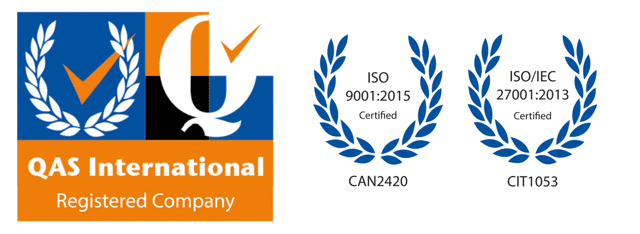Maintaining strong cybersecurity measures is vital; truly keeping pace with what is happening in security everyday is a challenge even for dedicated security professionals – this is why for ordinary folks, it’s so important to take heed of the distilled recommendations that can be easily implemented, and have a big impact on overall risk.
Large providers, such as Microsoft and Google, spend billions to put robust security in place for their systems; as your IT team, we work to put layers of security in place – but at some point, it comes down to you, the individual people who use the systems to play a part.
Multi-Factor Authentication (often known as MFA or 2FA) is a big thing you can do to reduce your personal risk, and your organizations risk. In this post, we’re going to talk about how it works, and why it can be so helpful.
Understanding Two-Factor Authentication (2FA) and Multi-Factor Authentication (MFA)
Before we delve into the significance of 2FA/MFA, let’s take a moment to understand what they are.
MFA is a security process that requires users to provide more than one type of identification when logging in. Typically, this involves combining something we know (like a password) with something we possess (such as a unique code generated by a mobile app). There can be lots of options – like facial recognition, pin codes, finger prints, live approval from another user, emailed codes, SMS codes, or hardware tokens.
Fortifying Password Security
Standalone passwords alone are no longer enough to protect our sensitive information. We often create weak or easily guessable passwords, reuse them across multiple accounts, or fall prey to phishing attacks. Password Managers (such as LastPass) can help with those risks, but MFA provides another layer.
By implementing 2FA/MFA, we significantly enhance the security of our authentication process. Even if someone manages to obtain our password, they would still be thwarted by the second or multiple authentication factors required to gain access.
Not all MFA factors are created equal; codes sent by SMS can be stolen by a dedicated attacker (it turns out cell phone providers don’t have much liability if they give your account to a 3rd party; if you are a gatekeeper to significant assets, especially consider having the types of MFA that guard those resources reviewed).
(In)Convenience
People have often had concerns about the convenience of MFA – it can be an extra thing to do, but isn’t always.
Major services often have a “Push” option, where, when an MFA step is needed, they can Push a request to your phone, and you just tap a checkmark to confirm that it’s a legitimate request. Or with Windows Hello doing Face Recognition or a PIN tied to the physical device, it can be faster and easier than not having MFA at all.
A related topic is “Single Sign On”; if you have one very well secured identity that works for multiple services (such as signing into your computer, business system, Microsoft 365, etc), you may be able to enter passwords less, and do MFA less than you ever have before (Ask us how!).
For us, even when it is inconvenient, we tend to imagine how much less convenient a successful attack would be – and then it doesn’t seem nearly so bad.
Mitigating Account Takeover and Identity Theft
One of the biggest threats is account takeover and identity theft. Malicious attacks can infiltrate our systems by leveraging stolen credentials or using sophisticated social engineering techniques.
With MFA in place, unauthorized access becomes more difficult. Even if an attacker possesses the correct username and password, they would be unable to bypass the additional authentication factor(s), making it much harder for them to impersonate us.
Enhancing Security for Remote Workforces
The COVID-19 pandemic has accelerated the adoption of remote work, making secure access to our corporate systems and data a top priority. This is a case where MFA can truly deliver. By requiring employees to authenticate through multiple factors, we ensure that only authorized individuals can access critical resources, even from remote locations. It adds an extra layer of protection to our valuable information.
Safeguarding Customer Data and Trust
As an organization, we handle valuable customer data, and maintaining their trust is of utmost importance. Our clients entrust us with their personal information, and they expect us to handle it with care. By using MFA, we show our commitment to data security. It reassures our customers that their accounts are safeguarded against unauthorized access, boosting their confidence in our ability to protect their sensitive information.
Cyber Insurance and Regulatory Standards
In addition to the trust we build with our customers, many industries are subject to regulatory requirements; even if not from industry regulations, in order to maintain Cyber Risk Insurance, MFA is very much a requirement these days – not only for access to Microsoft 365 or Google Workspace, but also for VPN access and any other critical resource access.
It’s Not Personal
We have often heard in our travels “I don’t have much to worry about, it’s just…”. The reminder we always like to give is that usually, these threats aren’t about you personally – these threats are highly automated and executed by specialized, professional teams who are playing the numbers.
Neither you, nor your business, want to be low hanging fruit; MFA is one of the various ways you make your accounts less attractive to the bad guys, usually without having to change your costs – and that’s a great deal.
Conclusion
In a world where cyber threats loom large, we must be vigilant and proactive in our security measures. Multi-Factor Authentication (MFA) offers a powerful defence against unauthorized access and data breaches. By adding an additional layer of authentication beyond passwords, MFA helps mitigate risks associated with weak or compromised credentials. It reinforces the security of both employee and customer accounts, fortifies our remote work environments, and helps us stay compliant with regulatory requirements.
Best of all, the bad guys hate it.
Looking forward to more years of serving you well,
- The Pund-IT Team



